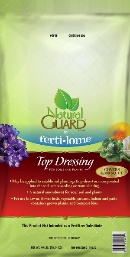Humates and Humic Acid
- Humates are highly compressed prehistoric matter consisting of plant and animal matter. This prehistoric organic matter has decomposed over thousands of centuries. Derived from a freshwater source.
- Humates are high in HuMic acid and contain most of the valuable plant nutritional substances not found in chemical fertilizers, such as; trace minerals, organic matter, carbon, chlorophyll and protein, all necessary for the development of plant life.
- The carbon in humates stimulate microorganism activity in the soil and break down the nutrients they use and need.
- The Humic acids, in humates, chelate the nutrients that are already locked up in the soil, and breaks them down to a form that allows plants to use them easily.
Advantages
● These are natural products that have no chemical additives.
● Treated soils show over 35% greater microorganism activity.
● They hold the nutrients in a usable form and releases them to the growing plant as needed.
● They release “locked-in” nutrients, making them more available for the plant to use.
● They promote chelation of available nutrients, converting the nutrients into a form more
available to the plant for growth. Also aids in correcting plant chlorosis (iron deficiency).
● They retain water soluble inorganic fertilizers and releases them to the growing plants as
needed, reducing leaching. Also helps stretch out the food availability between lawn
feedings.
● They activate the decomposition of organic matter; crop remains, new compost, thatch
and grass clippings.
● They help aerate the soil. Its colloidal action assists in preventing the formation of large
clods and stratification of the soil.
● Humates reduce soil erosion by increasing the cohesive forces of very fine soil particles and
promotes desirable drainage and water intake.
● Humates improve the tilth or workability of the soil and thus heavy clay soils can beworked into satisfactory seed beds, and marginal soils into profitable soils. Soils become more crumbly and suitable sized particles are formed in the aggregates.
● Humates help promote better drainage in clay soils.
● Humates increase the water holding capacity of soils. Soil containing humates resist drought more effectively and produces better yields where rainfall or irrigation may other wise be insufficient. (water holding capacity may be increased by up to 1000% in sandy soils and 700% in clay soils)
Humates and Humic acid do not provide a “Quick Fix” to the soil. The soil in your lawn and garden did not become poor overnight, thus it will take time to correct.
● Continued use will bring the soil, “Back-to-Life” restoring it back to a productive state.
● Occasional use will give you visual results within two to three weeks, but repeat applications every year and/or multiple times per year, will provide many benefits (listed below) and give long-term results that will amaze you and your neighbors
Benefits
● Produces healthier, stronger plants which withstand pests and stress more effectively, including; fungus, insects, drought and other weather conditions.
● Enhances seed germination when applied, before or after seeding. Any time you are putting seed on a lawn, use with New Lawn Starter for quicker establishment.
● Aids in turfgrass root development when applied in conjunction with lawn core aeration.
● Promotes better uniformity within the stand of grass.
● Improves plant vigor and visual appearance.
● Increases availability of soil nutrients. These products do not replace the application of
fertilizer, but enhance it. It does reduce the amount and frequency of fertilizer needed.
● Creates little or no increase in frequency of mowing.
● Enhances soil life with increased microorganism and earthworm activity.
● Significantly improves poor soil structure when used in combination with a balanced lawn care program. Clay soils will become loose. Sandy soils will show improvement in moisture retention.
● These will speed up the decomposition of lawn thatch, breaking it down and returning it back to the soil as valuable nutrients.
Application
Established Lawns: Apply in the Spring and again in the Fall and water in. On lawns that
appear to be doing better, apply at least once per year.
When Planting Grass Seed: Apply just prior to the seed and New Lawn Starter and water in.
Flower Beds and Vegetable Gardens: Apply when preparing the bed and incorporate.
Apply again as a side dressing after plants become established.
All Plants in Containers (indoor or outdoor): Apply, work in and water. Side dress if needed.
Compost: Apply to compost pile, work in and water. Turn the pile often to introduce air.
Supplies the following nutrients; N, P, K, S, Mg, Na, Fe, Al, Mn, Ca, Cu, Zn and more.




